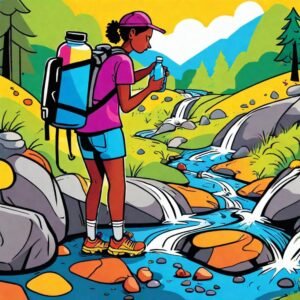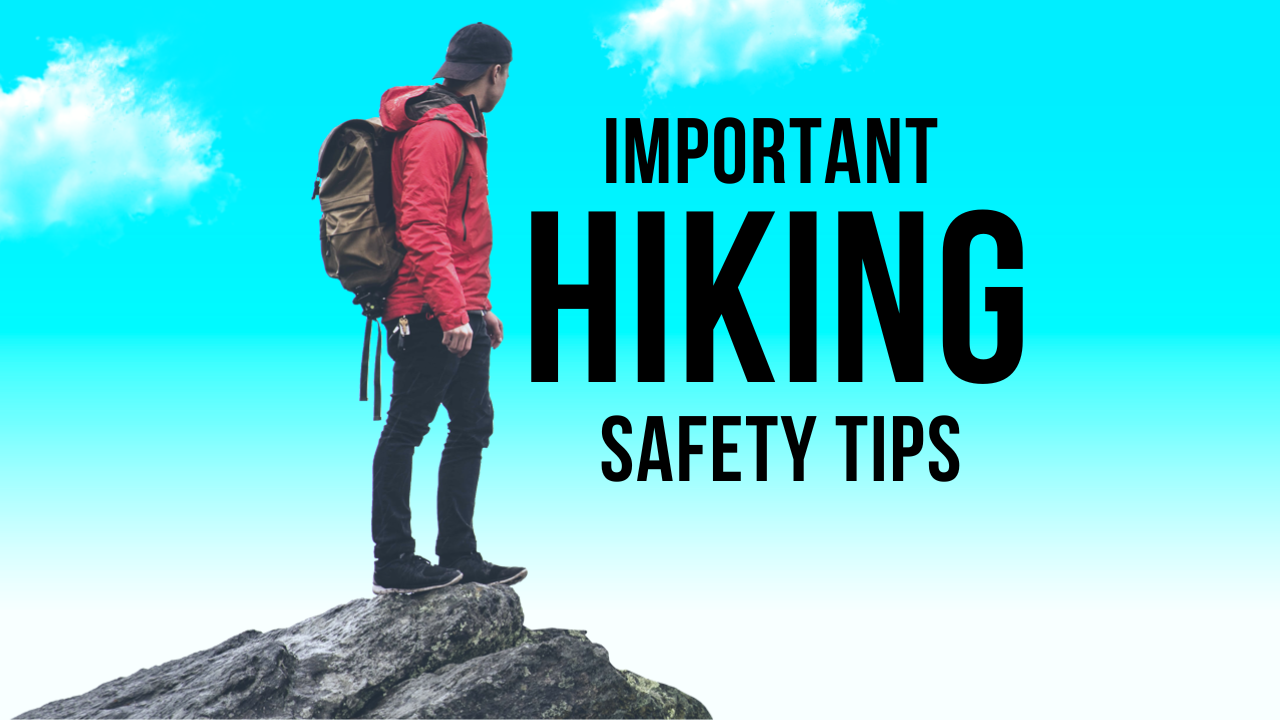Staying Safe on the Trail: Essential Hiking Safety Tips
Hiking in nature is not only a way to escape the hustle and bustle of daily life, but it also has significant physical and mental health benefits. However, the wilderness presents its own set of challenges. A comprehensive guide outlines crucial hiking safety principles to ensure that your outdoor adventures are not only enjoyable but also secure.

1. Preparation Before the Hike
1.1. Research and Route Planning
- Understand the trail difficulty and check the latest trail conditions.
- Estimate the time needed to hike the trail and plan your start and return times judiciously.
When planning a hike, it’s just like setting out on a journey; you wouldn’t start without knowing your route. Researching your trail is like picking the best path on a map. Websites and hiking forums can offer the latest updates and warnings.
1.2. Fitness and Health Considerations
- Assess your physical condition and any medical issues that might affect hiking.
- Discuss your plans with a healthcare professional if you have health concerns.
Never underestimate the trail or overestimate your fitness. A quick visit to your doctor can set your mind at ease. Remember, every step on the hike should be enjoyable, not a strain.
1.3. Packing Essentials
- Use a checklist to pack necessary equipment including navigation tools, sun protection, and first aid supplies.
- Prepare for weather changes with appropriate clothing and gear.
The backpack is your best friend on the hike, and packing it right is an art! Always be prepared for sudden weather shifts – remember, layers are key.
2. Navigation Proficiency
2.1. Using Maps and Compass
- Basics of reading topographic maps and using a compass.
- How to orient yourself using natural landmarks.
While GPS devices are handy, there’s a certain joy and reliability in using good old-fashioned maps and compasses. It ties you back to the roots of hiking.
2.2. Technological Aids
- Recommendations for GPS devices and hiking apps.
- Limitations of technology in remote areas.
Sure, technology is great, but remember that batteries die and signals fade. It’s always good to have a backup plan!
2.3. What to Do If You Get Lost
- Stay calm, stay put, and use your emergency whistle.
- Techniques to signal for help effectively.
Getting lost can be scary, but remember, panic is not your friend. A whistle carries over long distances and requires much less energy than shouting.
3. Environmental Awareness
3.1. Understanding Wildlife
- How to behave if you encounter wildlife.
- Safe food storage to avoid attracting animals.
Wildlife is part of nature’s beauty, but a close encounter can be dangerous. Keep your distance and store your food securely to avoid unwanted guests at your campsite.
3.2. Weather and Natural Conditions
- How to read changing weather patterns.
- Precautions for hiking in varying weather conditions.
Weather can change in a heartbeat, especially in the mountains. Learning to read the sky and understanding weather updates can be a lifesaver.
3.3. Trail Etiquette and Conservation
- Leave No Trace principles.
- Respect for fellow hikers and trail rules.
Keeping nature pristine and respecting others’ experiences ensures that the trails remain beautiful and open for everyone to enjoy.
4. Health and Endurance on the Trail
4.1. Hydration and Nutrition
- Importance of staying hydrated and monitoring signs of dehydration.
- Choosing high-energy, lightweight foods.
Water is your best friend on the trail. Couple it with good, nutritious snacks and you’re set for any adventure!

4.2. Dealing with Common Ailments
- First aid for blisters, minor cuts, and insect bites.
- Recognizing symptoms of altitude sickness and hypothermia.
A little first aid knowledge goes a long way. Pop a first aid guide into your pack or take a basic course. Your future self might thank you.
4.3. Breaks and Pacing
- Setting a sustainable pace.
- Importance of taking breaks and listening to your body.
The trail is not a race. Find your rhythm, pace yourself and listen to what your body tells you.
5. Emergency Situations
5.1. First Aid Preparedness
- Essential first aid skills every hiker should know.
- How to use a first aid kit effectively.
From treating a sprain to knowing CPR, first aid skills are invaluable. They make you a cornerstone in any hiking group.
5.2. Emergency Shelters
- Types of emergency shelters and how to construct them.
- Using space blankets and bivvy bags.
Sometimes, hikes take longer than expected. Knowing how to create an emergency shelter could be the difference between a rough night and a risky one.
5.3. Signalling for Help
- When and how to use flares, whistles and emergency beacons.
- Effective ways to make yourself visible to rescuers.
Visibility is critical when you need help. Bright clothes, reflective gear, or an SOS signal can guide rescuers to you faster.
Summary
To wrap up, remember that preparation, awareness, and the right equipment are your best allies on the trail. Approach each hike with respect for nature and a mindful attitude towards safety. Keep exploring, but always prioritize your well-being.
FAQs
What are the most essential items to bring on a hike?
How do I choose the fighlet trail for my fitness level?
What should I do if I encounter a bear or other dangerous wildlife?
How can I minimize my impact on the environment while hiking?
What are the signs of dehydration or heat exhaustion?
Adventure safely and enjoy every step you take in the great outdoors!

